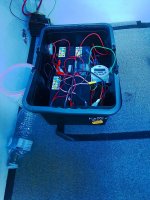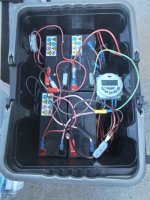korky
Full Member
- Posts
- 535
- Likes
- 865
I have always been a light power user, until now, with 2x100ah Yuasa Efb leisure batteries, backed up with 120w solar panel and a recently fitted 70a battery to battery charger.I also have a NASA BM1 battery monitor and 600w inverter.
I want to charge my E-bike batteries when off-grid and stationary. They are 36v and rated at 16.7ah and 13.4ah repectively and use a 6a charger.
What's confusing me is the 36v bit. If everything was 12v it is easy to see there is plenty of reserve power in my leisure batteries. When I have tried limited off-grid charging the battery monitor shows a 20a discharge rate at the start. I know I can use the monitor to prevent me taking the leisure batteries too low but would be grateful if some one more knowledgable could provide the calculation, i.e. what state of charge would my full leisure batteries show after charging the largest bike battery from flat? I would not normally need to charge both batteries on the same day.
I want to charge my E-bike batteries when off-grid and stationary. They are 36v and rated at 16.7ah and 13.4ah repectively and use a 6a charger.
What's confusing me is the 36v bit. If everything was 12v it is easy to see there is plenty of reserve power in my leisure batteries. When I have tried limited off-grid charging the battery monitor shows a 20a discharge rate at the start. I know I can use the monitor to prevent me taking the leisure batteries too low but would be grateful if some one more knowledgable could provide the calculation, i.e. what state of charge would my full leisure batteries show after charging the largest bike battery from flat? I would not normally need to charge both batteries on the same day.
Last edited:


